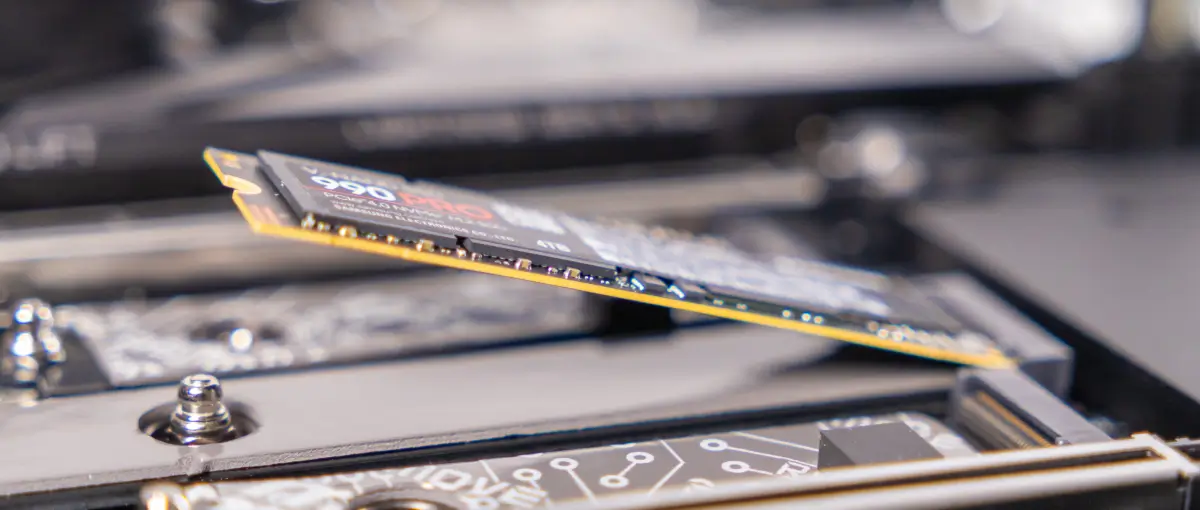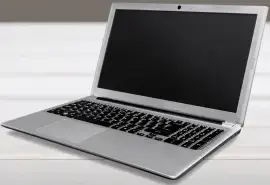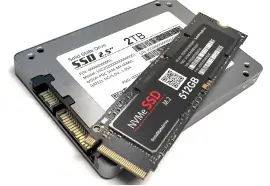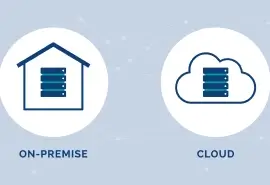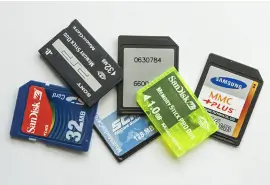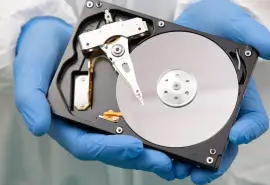Solid-state drives (SSDs) have become the dominant device for desktops and laptops as NAND flash storage continues to evolve. SSDs deliver the blistering speeds needed to handle the most demanding workloads, including gaming, video editing, and data processing.
As a result, the market for SSDs is more crowded than ever. Yet, choosing from thousands of options can overwhelm consumers who are not tech-savvy.
That is why our experts decided to break down the best SSDs of 2025 by performance, platform, and price. So you can focus on what really matters without worrying about whether your drive is up to the task.
Editor’s Note: Interested in other types of hard drives? Read our buying guide for hard drives.
Expert Shopping Tips for SSDs
Make sure to consider these factors when searching for a new SSD:
Storage Capacity: SSDs have matured in this regard, but extra space often comes at a cost. In most cases, 2 TB and 4 TB models are the best blend of ample storage space and affordable prices. Regardless, a 1 TB SSD may suit someone simply looking for a better system drive. Or a power user might prefer an 8 TB SSD. Account for your current capacity and future growth.
Form Factor: Modern SSDs are available in several shapes and sizes. Most of the attention centers on M.2 SSDs, but slots for these compact drives are limited in many computers. Other types of SSDs exist, though. Some video game consoles, such as the Xbox Series X|S or handheld PCs, require different form factors. Even a 2.5-inch SSD has a role in specific machines.
Interface: In general, Non-Volatile Memory Express (NVMe) is the ideal interface for SSDs. The protocol defines how the drive’s firmware exchanges commands with the host system’s motherboard. While NVMe is the fastest interface for consumers, SATA SSDs still offer improved throughput over hard disks.
Bus Type: Peripheral Component Interconnect Express (PCIe) is the most popular standard for SSDs. PCIe refers to high-speed lanes that shuttle data between the SSD, central processor, random-access memory (RAM), and graphics card. This physical connection impacts the device’s transfer rates. Not all motherboards support the latest generation of PCIe. Therefore, a Gen 5 SSD will bottleneck compared to an older PCIe spec. Review your motherboard's manual for more info.
Cell Type: SSDs store a varying amount of bits per cell. Single-level cell (SLC) provides the highest throughput and lowest density. It also wears out the fastest. Multi-level cell (MLC) and triple-level cell (TLC) designs aim to strike a balance between capacity and performance. Quad-level cell (QLC) provides the most storage space but heavily relies on caching to compensate for slower speeds. However, a cache of faster memory can quickly fill up and prevent the controller from flushing data back to the main cells. This saturation throttles the drive.
Specialized Features: Manufacturers tailor some SSDs to address specific workflows or failure modes. Advanced features include DRAM (dynamic RAM) or SLC caching, power-loss protection, and thermal management.
Warranty: SSDs are complex devices. A robust warranty can guard against financial loss due to a catastrophic failure of your drive. Established companies typically extend the strongest terms to their customers.
Being mindful of these attributes will help you make the perfect purchase.
Best Solid-State Drives
SSDs harness the latest advancements in NAND flash memory to reach the pinnacle of performance. These blazing-fast drives translate into shorter load times, smoother rendering of high-res media, and quicker processing of large datasets.
Here are our best SSDs in the following categories:
- Fastest SSD
- Best SSD for Video Editing
- Best SSD for PC Gamers
- Best SSD for PS5 Gamers
- Best SSD for Xbox Series X|S Gamers
- Best SSD for Handheld Gamers
- Best SSD for Budget PCs
- Best SSD for Laptops
- Best SSD for Network-Attached Storage (NAS)
Best SSD for Pure Performance: SanDisk WD Black SN8100
| AT A GLANCE: SanDisk WD Black SN8100 | |
|---|---|
| Form Factor | M.2 2280 |
| Capacities | 1 TB, 2 TB, and 4 TB |
| DRAM Cache | Yes |
| Interface and Bus Type | NVMe 2.0 over PCIe 5.0 x4 |
| Max Sequential Read Speed | 14,900 MB/s |
| Max Sequential Write Speed | 14,000 MB/s |
| Warranty | 5-Year Limited |
| Pros |
|
| Cons |
|
Why We Recommend It:
SanDisk’s WD Black SN8100 boasts breakneck speeds for high-end gaming, content creation, and AI workflows. The brand-new SSD, released in May 2025, keeps that promise. The SN8100’s speeds rank near the top of PCPartPicker’s benchmark at critical queue depths for both the 2 TB and 4 TB models. The drive utilizes a DRAM buffer with nCache 4.0 tech to improve sequential speeds and random performance. It also features the latest 3D NAND architecture to increase the energy and thermal efficiency of each wafer on a per-bit basis.
Overall, the SN8100 raised the bar for consumer hardware. As such, it wears the crown for fastest M.2 SSD on the market. For now. However, the SN8100 is a PCIe 5.0 SSD. Many current motherboards do not support the fifth-gen SSDs. Check your motherboard’s specs to avoid bottlenecking the SN8100 and other Gen 5 drives.
Note: SanDisk announced the release of an 8 TB SN8100 in Fall 2025.
Alternate Choice: Crucial P510
The Crucial P510 delivers the impressive speeds of an NVMe SSD over PCIe 5.0 at a much lower price. The P510 doesn’t quite match the performance of similar models if you want the outright fastest consumer SSD. The drive’s pricing is unbeatable, though. A 1 TB P510 retails right around the $100 mark. As such, it is a great option to enter the world of next-gen SSDs.
Best SSD for Video Editing: Crucial T705
| AT A GLANCE: Crucial T705 | |
|---|---|
| Form Factor | M.2 2280 |
| Capacities | 1 TB, 2 TB, and 4 TB |
| DRAM Cache | Yes |
| Interface and Bus Type | NVMe 2.0 over PCIe 5.0 x4 |
| Max Sequential Read Speed | 14,500 MB/s |
| Max Sequential Write Speed | 12,700 MB/s |
| Warranty | 5-Year Limited |
| Pros |
|
| Cons |
|
Why We Recommend It:
The Crucial T705 is a strong contender for the title of fastest M.2 NVMe SSD. While Crucial’s SSD no longer claims the top spot on benchmarks, the T705 still achieves jaw-dropping speeds. The drive can rip through the most intense workloads, including real-time, multi-camera editing, without a hiccup. The T705 also shines in terms of reliability. It protects against data loss from sudden shutdowns or power surges and uses built-in parity for bad blocks. In addition, Crucial’s bundled software streamlines drive management and includes tools for cloning and imaging.
We recommend getting a model with a heatsink to minimize thermal concerns. However, the T705 is a clear winner.
Alternate Choice: Crucial T500
The T500 is a Gen 4 alternative to the T705 if your motherboard does not support PCIe 5.0. Crucial’s T500 has high throughput and write endurance, while retaining many of the T705’s useful features.
Best SSD for PC Gaming: Samsung 990 PRO
| AT A GLANCE: Samsung 990 PRO | |
|---|---|
| Form Factor | M.2 2280 |
| Capacities | 1 TB, 2 TB, and 4 TB |
| DRAM Cache | Yes |
| Interface and Bus Type | NVMe 2.0 over PCIe 4.0 x4 |
| Max Sequential Read Speed | 7,450 MB/s |
| Max Sequential Write Speed | 6,900 MB/s |
| Warranty | 5-Year Limited |
| Pros |
|
| Cons |
|
Why We Recommend It:
The Samsung 990 PRO is a Gen 4 SSD, so it will not set records on benchmarks. Yet, it remains capable of taming most games on the highest graphics. The sequential read speeds of the 990 PRO create a seamless experience across genres and titles. In addition, the drive features a DRAM buffer that helps push performance close to the maximum threshold of PCIe 4.0. Samsung sells models with a heatsink to manage temperatures during extended sessions, as well as RGB lighting for those who prefer to customize PCs. The 990 PRO comes with Samsung Magician software as well. This simple program ensures updated firmware and access to migration tools, so add-ons and saved settings are never lost.
While the 990 PRO may not match the speed of Gen 5 SSDs, it is a reliable device with more than enough speed for most gamers.
Alternate Choice: SanDisk WD Black SN850X
The WD Black SN850X is another Gen 4 SSD designed for heavy gaming. The SN850X has one key difference from the 990 PRO, though. Its lineup includes a massive 8 TB drive, giving gamers the option of a much larger SSD.
Best SSD for PS5 Gaming: SanDisk WD Black SN850X
| AT A GLANCE: SanDisk WD Black SN850X | |
|---|---|
| Form Factor | M.2 2280 |
| Capacities | 1 TB, 2 TB, 4 TB, and 8 TB |
| DRAM Cache | Yes |
| Interface and Bus Type | NVMe over PCIe 4.0 x4 |
| Max Sequential Read Speed | 7,300 MB/s |
| Max Sequential Write Speed | 6,600 MB/s |
| Warranty | 5-Year Limited |
| Pros |
|
| Cons |
|
Why We Recommend It:
As mentioned above, the WD Black SN850X shines when it comes to storage space. An 8 TB M.2 SSD that maintains the expected performance of an NVMe drive is no small feat. The SN850X reaches the 8 TB mark with TLC NAND and an onboard DRAM buffer. That means the drive avoids the decreased speeds that come from using QLC for greater capacities. In addition, the SN850X has high burst write speeds to finish downloads.
Storage space is a huge factor for PlayStation® 5 SSDs. The size of modern games continues to grow, and the console contains a single expansion slot. In that regard, the SN850X is an excellent workhorse.
Alternate Choice: SanDisk WD Black SN850P
The SN850P is the same drive as the SN850X. It is just fitted with a heatsink and PlayStation® branding. The product might appeal to some buyers, but you will pay a premium for it.
Best SSD for Xbox Series X|S Gaming: SanDisk WD Black C50
| AT A GLANCE: SanDisk WD Black C50 | |
|---|---|
| Form Factor | Xbox Expansion Card |
| Capacities | 512 GB, 1 TB, and 2 TB |
| DRAM Cache | No |
| Interface and Bus Type | Xbox Expansion Slot |
| Max Sequential Read Speed | N/A |
| Max Sequential Write Speed | N/A |
| Warranty | 5-Year Limited |
| Pros |
|
| Cons |
|
Why We Recommend It:
The Xbox Series X|S requires a specialized SSD because the console lacks a standard expansion slot. The WD Black C50 Storage Expansion Card is a purpose-built SSD based on the M.2 2230 form factor. It is optimized for the Xbox’s architecture and supports Quick Resume. This feature allows gamers to resume suspended sessions across multiple titles. The card also has a lower retail price than previous products, as Xbox has ended exclusive licensing for storage expansion.
The C50 is a good choice for those who want extra storage space to install more games.
Best SSD for Handheld Gaming: Corsair MP600 MINI
| AT A GLANCE: Corsair MP600 MINI | |
|---|---|
| Form Factor | M.2 2230 |
| Capacities | 1 TB and 2 TB |
| DRAM Cache | No |
| Interface and Bus Type | NVMe over PCIe 4.0 x4 |
| Max Sequential Read Speed | 5,000 MB/s |
| Max Sequential Write Speed | 3,800 MB/s |
| Warranty | 5-Year Limited |
| Pros |
|
| Cons |
|
Why We Recommend It:
Gaming handhelds, such as the Steam Deck™ and ASUS ROG Ally, have gained popularity in recent years. Users can upgrade many handheld consoles with an M.2 2230 SSD for more storage space and NVMe performance. The ultra-compact Corsair MP600 MINI has a single-sided circuit board to dissipate heat and fit within these devices. While the MP600 MINI has solid capacities and speeds for handheld gaming, its efficient power consumption separates it from the pack. More gamers benefit from longer battery life than slightly higher throughput.
We do recommend choosing the MP600 MINI over the CORE MINI because it uses TLC instead of QLC. A drive with QLC flash can experience sluggish performance when it is full.
Note: The internal storage for Nintendo Switch consoles is soldered to the motherboard. Therefore, you cannot replace that hardware. They also do not recognize external SSDs.
Alternate Choice: Crucial P310
The Crucial P310 has better read/write speeds than the Corsair MP600 MINI if raw performance is your only concern.
Best SSD for Workstations: Kingston FURY Renegade
| AT A GLANCE: Kingston FURY Renegade | |
|---|---|
| Form Factor | M.2 2280 |
| Capacities | 500 GB, 1 TB, 2 TB, and 4 TB |
| DRAM Cache | Yes |
| Interface and Bus Type | NVMe over PCIe 4.0 x4 |
| Max Sequential Read Speed | 7,300 MB/s |
| Max Sequential Write Speed | 7,000 MB/s |
| Warranty | 5-Year Limited |
| Pros |
|
| Cons |
|
Why We Recommend It:
The Kingston FURY Renegade can handle tasks typical of a high-end workstation. The device has the throughput necessary for sustained workloads, such as large-scale processing or hosting virtual machines. Beyond its speeds, the FURY Renegade has incredible write endurance for a Gen 4 SSD. The drive’s controller manages a spare pool of storage space to ensure more blocks are always free for writing. This technique is known as overprovisioning (OP). The FURY Renegade has a higher baseline (10%) for their OP figure than other consumer M.2 SSDs.
While select SSDs may register better speeds on benchmarks, the Kingston FURY Renegade offers similar performance at a lower price.
Alternate Choice: Micron 7450 PRO
The Micron 7450 PRO is among the best U.3 SSDs for power users who truly require enterprise-class performance. The 7450 PRO and other U.3 series are significantly more expensive than an M.2 NVMe SSD. However, the increased capacities, endurance, and support could be worth it in some cases.
Best SSD for Budget PC: Crucial P3 Plus
| AT A GLANCE: Crucial P3 Plus | |
|---|---|
| Form Factor | M.2 2280 |
| Capacities | 500 GB, 1 TB, 2 TB, and 4 TB |
| DRAM Cache | No |
| Interface and Bus Type | NVMe over PCIe 4.0 x4 |
| Max Sequential Read Speed | 5,000 MB/s |
| Max Sequential Write Speed | 4,200 MB/s |
| Warranty | 5-Year Limited |
| Pros |
|
| Cons |
|
Why We Recommend It:
The Crucial P3 Plus is a budget-friendly option for a system drive when building or upgrading a PC. Despite using QLC flash to control costs, its speeds are still a dramatic improvement over those of a spinning disk. Buyers can purchase a 1 TB P3 Plus for under $75. Often, they can buy a 2 TB model for a little more than $100. As a result, the P3 Plus represents a good value for customers seeking performance gains on a budget. Switching the main drive to an SSD means much faster boot times, browsing, downloads, and multitasking.
The five-year warranty also does not hurt.
Alternate Choice: Samsung 870 EVO
Even PCs without an M.2 slot can realize the benefits of an SSD without breaking the bank. The Samsung 870 EVO is one of the best SATA SSDs for people who find themselves in that position. The 2.5-inch SSD can slot into a bay inside many desktops and performs significantly better than an HDD. A 1 TB 870 EVO frequently costs less than $100.
Best SSD for Laptop: Crucial T500
| AT A GLANCE: Crucial T500 | |
|---|---|
| Form Factor | M.2 2280 |
| Capacities | 500 GB, 1 TB, 2 TB, and 4 TB |
| DRAM Cache | Yes |
| Interface and Bus Type | NVMe over PCIe 4.0 x4 |
| Max Sequential Read Speed | 7,400 MB/s |
| Max Sequential Write Speed | 7,000 MB/s |
| Warranty | 5-Year Limited |
| Pros |
|
| Cons |
|
Why We Recommend It:
The Crucial T500’s status as an all-around M.2 NVMe SSD makes it a smart choice for laptop upgrades. Although the T500 does not lead benchmarks, the drive provides sufficient performance for the average user. The T500 often makes older laptops more responsive by boosting boot speeds and reducing load times on games. It also comes with a bundle of helpful features, including Crucial’s software and safeguards against data loss. While the T500 is efficient in use, it draws more power when idle than comparable models. This consumption could drain a laptop’s battery a few minutes quicker than a more efficient SSD.
The T500 runs on PCIe 4.0 over four lanes. As of July 2025, laptops offer widespread support for M.2 slots that accommodate Gen 4 SSDs. However, there are still a limited number of flagship models with PCIe 5.0 x 4 support. For that reason, a Gen 5 SSD could only achieve Gen 4 speeds. Check your laptop’s spec sheet before splurging on a next-gen drive.
Note: Some popular laptops, such as the MacBook, have NAND flash chips soldered right to the logic board. You cannot upgrade the storage device in these laptops.
Alternate Choice: Samsung 870 EVO
Some laptops do not have an M.2 slot. If that is the case, replacing the old drive with a new SATA SSD might work. As stated above, the Samsung 870 EVO is a popular SATA SSD due to its proven performance and fair price tag. Check the type of SSD your laptop supports before buying a new device.
Best SSD for NAS Devices
Deploying SSDs in NAS is a very niche case. The majority of home users and small businesses will not derive significant benefits from an all-flash NAS unit. Especially given the increased cost of enterprise SSDs.
If you plan to outfit your homelab or office NAS with SSDs:
- Confirm the drive bays, slots, and backplanes inside the NAS appliance. This step will determine your SSD’s form factor, interface, and bus type.
- Look for models with better write endurance. Metrics such as TBW (terabytes written) and DWPD (drive writes per day) give key insights into endurance.
- Opt for MLC (multi-level cell) or TLC (triple-level cell) over QLC (quad-level cell) despite the higher cost per TB. As mentioned, QLC suffers from lower endurance and slower performance under sustained workloads.
- Consider features like firmware fine-tuned for RAID with power-loss protection.
Note: Striping data across a pair of SSDs through RAID 0 is possible. This setup would improve throughput on a benchmark, but the real-world performance of a single SSD is almost identical. In addition, installing a high-end SSD is not as complex and carries less risk.
How We Chose Our Picks
The recommendations in this article are our opinions on the best SSDs available. We have relationships with certain brands, but these partnerships did not influence our selection process. Furthermore, we do not earn commissions or referral fees for any listed products.
Our staff would pick these devices if they were looking to buy an SSD for the given spec or workload. We made these choices based on our expertise in NAND flash storage and experience with common SSD failures.
Secure Data Recovery is the leader in SSD recovery. Our certified engineers have recovered data from thousands of failed SSDs since 2007 and continue to develop new methods. We extend free quotes and a No Data, No Recovery Fee guarantee as part of our standard service.

